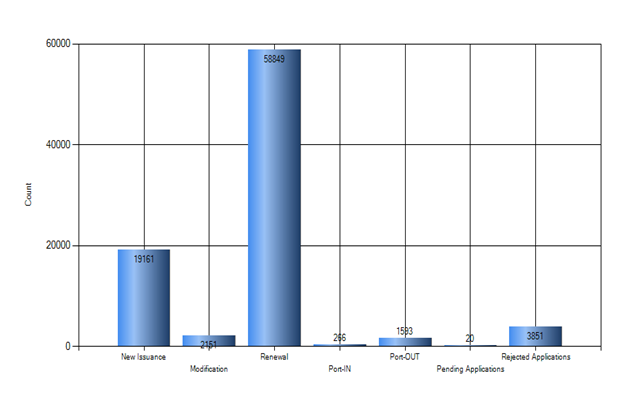In the complex and interconnected world of financial market, transparency is crucial to maintaining stability and ensuring trust among market participants. One important tool that has emerged to serve this purpose is the Legal Entity Identifier (LEI). This 20-character alphanumeric code may seem like a minor detail in the vast financial landscape, but it plays a significant role in enhancing transparency, risk management, and regulatory oversight.
The LEI is designed to uniquely identify legal entities engaged in financial transactions. These entities can range from corporations, banks, investment firms, non-profits organizations, or even government bodies. The LEI system was established after the 2008 financial crisis to address the need for greater transparency in financial markets.
Steps to Obtain LEI Registration-
LEI can be obtained from Registration Agents, recognised as an issuer of LEI by the Reserve Bank of India (RBI).
Application for LEI with Agent
Agent validated data with Ministry of Corporate Affairs
Issuance of LEI Code
LEI Code is entered into GLEIF database
The Global Legal Entity Identifier Foundation (GLEIF) manages a network of partners to provide trusted services and open, reliable data for unique legal entity identification worldwide. GLEIF services ensure the operational integrity of the Global Legal Entity Identifier (LEI) System.
Obligation of Registration/Obtaining LEI on following Entities-
- All the Eligible Market Participants of Non-Derivative Markets
- Non-Resident Entities
- Non-Individual Borrowers
- Participants of the Over the Counter (OTC) Derivatives Markets
- Large Corporate Borrowers
- Non-Individual Entities using Reserve Bank-run Centralised Payment Systems
- Issuers who have listed and/ or propose to list non-convertible securities, securitised debt instruments and security receipts
- Non-Individual Foreign Portfolio Investors (FPIs)
- Cross Border Transactions
- Insurers and their Corporate Borrowers
Validity of LEI –
The Legal Entity Identifier (LEI) code is valid for 1 year from the date of issue. The code must then be extended (via a renewal application) for the following year.
The Legal Entity Identifier (LEI) Code so obtained is renewed as per Global Legal Entity Identifier Foundation (GLEIF) guidelines by making an online application along with the requisite documents and fees.
- If there is no change in authorised person – The legal entity has to submit complete set of audited financial statement of the entity, Direct/Ultimate holding company (In case if they have Direct and Ultimate holding company).
- If there is change in authorised person – legal entity has to provide new Board Resolution (BR) and Undertaking cum indemnity (UCI). If new authorised person name was present is last year’s BR and UCI then there is no need to submit the same.
Importance of LEI –
- Risk Management – Enabling improved risk management is one of the LEI’s main purposes. Through precise identification of all parties engaged in a financial transaction, market players and regulators can evaluate the possible risks connected to these organisations. This eventually contributes to financial stability by assisting in the early discovery and mitigation of systemic threats.
- Transparency – Reducing fraud and market misuse is made easier by the LEI. By offering a reliable and consistent way to identify market participants, it makes it more difficult for individuals or organisations to participate in fraudulent practises. In order to foster honesty and trust in the financial sector, transparency is essential.
- Regulatory Oversight – The LEI improves regulatory supervision while streamlining financial transaction reporting. It simplifies the process of gathering data, which facilitates monitoring and evaluating systemic threats by authorities. As a result, regulations become more effective and efficient, ultimately safeguarding investors and the larger financial system.
Data of LEI Registrations between April 01, 2022 and September 30, 2023 1

In conclusion, the Legal Entity Identifier (LEI) code for improving regulatory oversight, risk management, and entity transparency. As we continue to navigate the complex landscape of global financial markets, the LEI plays a vital role in ensuring the integrity and stability of these systems. Its importance is undeniable, and its adoption and use are likely to grow as the world of finance becomes increasingly interconnected.
Note:-
1. https://www.ccilindia-lei.co.in/AD_LEI_CHART.aspx
Disclaimer
The information provided in this article is intended for general informational purposes only and should not be construed as legal advice. The content of this article is not intended to create and receipt of it does not constitute any relationship. Readers should not act upon this information without seeking professional legal counsel.


